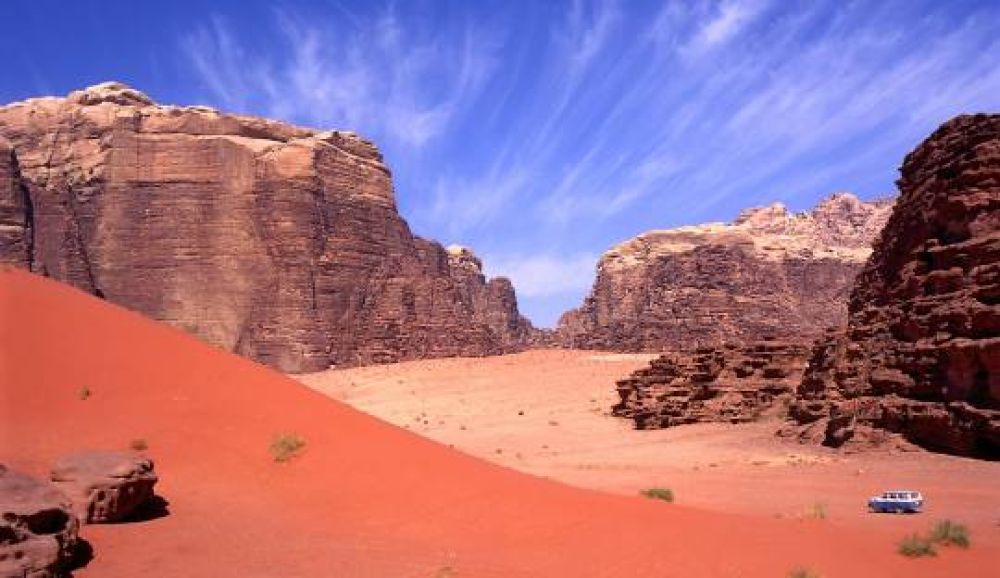

Wadi Rum, also known as The Valley of the Moon, is located in southern Jordan and has captivated travellers and adventurers for centuries. Its otherworldly landscape boasts towering cliffs, natural arches, and vast red sands, contributing to its cosmic allure and mystery.
Historically, Wadi Rum has been inhabited by various cultures including the Nabateans who left their mark in the form of rock paintings, graffiti, and temples. These ancient inscriptions are a testament to the region's long-standing significance to human civilizations, drawing historians and archeologists to unravel its past.
In the 20th century, Wadi Rum's modern fame began to rise with the Arab Revolt during World War I. The British officer T.E. Lawrence, also known as Lawrence of Arabia, passed through the valley, which later earned cinematic glory through the 1962 film based on his life. This film sparked global interest in Wadi Rum, establishing its place on the tourist map.
As a response to growing interest, Jordanian authorities began to develop the area's tourism potential. The improvements to infrastructure included the creation of designated protected areas, the establishment of Bedouin-run campsites, and guided tour services, allowing visitors to safely explore the region's natural wonders.
In 2011, Wadi Rum's value was internationally recognized when it was inscribed as a UNESCO World Heritage Site, under the title Wadi Rum Protected Area. This status helped to further boost tourism, conserving the area's natural and cultural resources.
Today, Wadi Rum attracts tourists from all over the world. Travelers come to experience a variety of activities including:
Wadi Rum's eco-tourism is on the rise, with more sustainable travel options and conservation efforts becoming part of the tourism model. Travelers are increasingly seeking authentic experiences that also contribute to the preservation of the natural and cultural heritage of the area.
The future of tourism in Wadi Rum looks to balance the growing demands of international travelers with the essential preservation of its unique desert landscape and the livelihood of its indigenous people. With a strong focus on responsible and sustainable tourism practices, Wadi Rum stands out as a destination that not only presents the timeless beauty but also a commitment to its future.